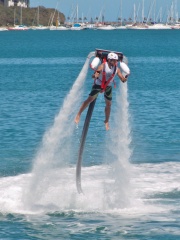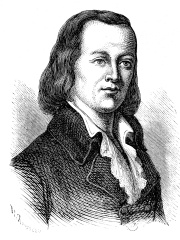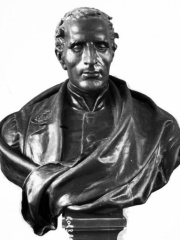

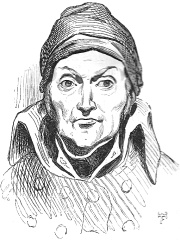

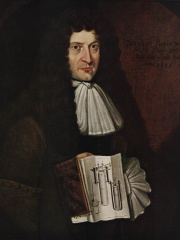
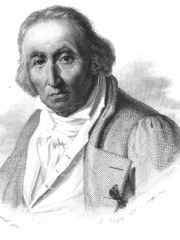
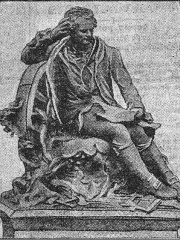
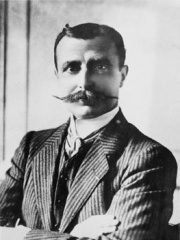
The Most Famous
INVENTORS from France
This page contains a list of the greatest French Inventors. The pantheon dataset contains 426 Inventors, 39 of which were born in France. This makes France the birth place of the 4th most number of Inventors behind United Kingdom, and Germany.
Top 10
The following people are considered by Pantheon to be the top 10 most legendary French Inventors of all time. This list of famous French Inventors is sorted by HPI (Historical Popularity Index), a metric that aggregates information on a biography's online popularity. Visit the rankings page to view the entire list of French Inventors.

1. Louis Braille (1809 - 1852)
With an HPI of 81.98, Louis Braille is the most famous French Inventor. His biography has been translated into 87 different languages on wikipedia.
Louis Braille ( brayl; French: [lwi bʁɑj]; 4 January 1809 – 6 January 1852) was a French educator and the inventor of a reading and writing system named after him, braille, intended for use by visually impaired people. His system is used worldwide and remains virtually unchanged to this day. Braille was blinded in one eye at the age of three. This occurred as a result from an accident with a stitching awl in his father's harness-making shop. Consequently, an infection set in and spread to both eyes, resulting in total blindness. At that time, there were not many resources in place for the blind, but he nevertheless excelled in his education and received a scholarship to France's Royal Institute for Blind Youth. While still a student there, he began developing a system of tactile code that could allow blind people to read and write quickly and efficiently. Inspired by a system invented by Charles Barbier, Braille's new method was more compact and lent itself to a range of uses, including music. He presented his work to his peers for the first time in 1824, when he was fifteen years old. In adulthood, Braille served as a professor at the Institute and had an avocation as a musician, but he largely spent the remainder of his life refining and extending his system. It went unused by most educators for many years after his death, but posterity has recognized braille as a revolutionary invention, and it has been adapted for use in languages worldwide.

2. Louis Daguerre (1787 - 1851)
With an HPI of 79.44, Louis Daguerre is the 2nd most famous French Inventor. His biography has been translated into 80 different languages.
Louis-Jacques-Mandé Daguerre ( də-GAIR; French: [lwi ʒɑk mɑ̃de daɡɛʁ]; 18 November 1787 – 10 July 1851) was a French scientist, artist and photographer recognized for his invention of the eponymous daguerreotype process of photography. He became known as one of the fathers of photography. Though he is most famous for his contributions to photography, he was also an accomplished painter, scenic designer, and a developer of the diorama theatre.

3. Nicolas Appert (1749 - 1841)
With an HPI of 79.23, Nicolas Appert is the 3rd most famous French Inventor. His biography has been translated into 85 different languages.
Nicolas Appert (17 November 1749 – 1 June 1841) was a French confectioner and inventor who, in the early 19th century, invented airtight food preservation. Appert, known as the "father of food science", described his invention as a way "of conserving all kinds of food substances in containers".

4. Rudolf Diesel (1858 - 1913)
With an HPI of 79.13, Rudolf Diesel is the 4th most famous French Inventor. His biography has been translated into 86 different languages.
Rudolf Christian Karl Diesel (English: , German: [ˈʁuːdɔlf ˈkʀɪsti̯an kaʁl ˈdiːzl̩] ; 18 March 1858 – 29 September 1913) was a German inventor and mechanical engineer, best known for inventing the Diesel engine, which burns Diesel fuel; both are named after him.
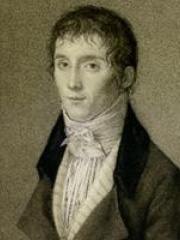
5. Nicéphore Niépce (1765 - 1833)
With an HPI of 77.97, Nicéphore Niépce is the 5th most famous French Inventor. His biography has been translated into 62 different languages.
Joseph Nicéphore Niépce (French: [nisefɔʁ njɛps]; 7 March 1765 – 5 July 1833) was a French inventor and one of the pioneers of photography. Niépce developed heliography, a technique he used to create the world's oldest surviving products of a photographic process. In the mid-1820s, he used a primitive camera to produce the oldest surviving photograph of a real-world scene. Among Niépce's other inventions was the Pyréolophore, one of the world's first internal combustion engines, which he conceived, created, and developed with his older brother Claude Niépce.

6. Denis Papin (1647 - 1712)
With an HPI of 75.42, Denis Papin is the 6th most famous French Inventor. His biography has been translated into 52 different languages.
Denis Papin FRS (French pronunciation: [dəni papɛ̃]; 22 August 1647 – 26 August 1713) was a French Huguenot physicist, mathematician and inventor, best known for his pioneering invention of the steam digester, the forerunner of the pressure cooker, the steam engine, the centrifugal pump, and a submersible boat. He started his career in his native France, then lived in England and rising to staff member of the Royal Society in 1684, but, as a Huguenot, was denied to return to France after Louis XIV of France invoked the Edict of Fontainebleau in 1685. He went into exile in Germany and employed as a mathematics professor of the University of Marburg from 1687-1707, before returning to England the last 5 years of his life. In spite of his many discoveries he died a pauper, and the date of his death and burial site were lost for 303 years.

7. Joseph Marie Jacquard (1752 - 1834)
With an HPI of 74.32, Joseph Marie Jacquard is the 7th most famous French Inventor. His biography has been translated into 45 different languages.
Joseph Marie Charles dit (called or nicknamed) Jacquard (; French: [ʒakaʁ]; 7 July 1752 – 7 August 1834) was a French weaver and merchant. He played an important role in the development of the earliest programmable loom (the "Jacquard loom"), which in turn played an important role in the development of other programmable machines, such as an early version of digital compiler used by IBM to develop the modern day computer.

8. Nicolas-Joseph Cugnot (1725 - 1804)
With an HPI of 72.27, Nicolas-Joseph Cugnot is the 8th most famous French Inventor. His biography has been translated into 42 different languages.
Nicolas-Joseph Cugnot (26 February 1725 – 2 October 1804) was a French inventor who built the world's first full-size and working self-propelled mechanical land-vehicle, the "Fardier à vapeur" – effectively the world's first automobile.

9. Louis Blériot (1872 - 1936)
With an HPI of 71.46, Louis Blériot is the 9th most famous French Inventor. His biography has been translated into 52 different languages.
Louis Charles Joseph Blériot ( BLERR-ee-oh, also US: BLAY-ree-oh, -OH, blair-YOH, French: [lwi ʃaʁl ʒozɛf bleʁjo]; 1 July 1872 – 1 August 1936) was a French aviator, inventor, and engineer. He developed the first practical headlamp for cars and established a profitable business manufacturing them, using much of the money he made to finance his attempts to build a successful aircraft. Blériot was the first to use the combination of hand-operated joystick and foot-operated rudder control as used to the present day to operate the aircraft control surfaces. Blériot was also the first to make a working, powered, piloted monoplane. In 1909 he became world-famous for making the first aeroplane flight across the English Channel, winning the prize of £1,000 (worth £152,113 in 2025) offered by the Daily Mail newspaper. He was the founder of Blériot Aéronautique, a successful aircraft manufacturing company.
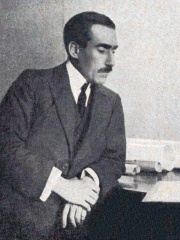
10. Louis Renault (1877 - 1944)
With an HPI of 71.06, Louis Renault is the 10th most famous French Inventor. His biography has been translated into 33 different languages.
Louis Renault (French pronunciation: [lwi ʁəno]; 12 February 1877 – 24 October 1944) was a French industrialist, one of the founders of Renault, and a pioneer of the automobile industry. Renault built one of France's largest automobile manufacturing concerns, which still bears his name. During World War I his factories contributed massively to the war effort, notably so by the creation and manufacture of the first tank of modern configuration, the Renault FT tank. Accused of collaborating with the Germans during World War II, he died while awaiting trial in liberated France toward the end of 1944 under uncertain circumstances. His company was seized and nationalized by the provisional government of France, although he died before he could be tried. His factories were the only ones permanently expropriated by the French government. In 1956, Time magazine described Renault as "rich, powerful and famous, cantankerous, brilliant, often brutal, the little Napoleon of an automaking empire — vulgar, loud, domineering, impatient, he was a terror to associates, a friend to practically none," adding that to the French working man, Renault became known as "the ogre of Billancourt."
People
Pantheon has 39 people classified as French inventors born between 1510 and 1978. Of these 39, 1 (2.56%) of them are still alive today. The most famous living French inventors include Franky Zapata. The most famous deceased French inventors include Louis Braille, Louis Daguerre, and Nicolas Appert.
Living French Inventors
Go to all RankingsDeceased French Inventors
Go to all RankingsLouis Braille
1809 - 1852
HPI: 81.98
Louis Daguerre
1787 - 1851
HPI: 79.44
Nicolas Appert
1749 - 1841
HPI: 79.23
Rudolf Diesel
1858 - 1913
HPI: 79.13
Nicéphore Niépce
1765 - 1833
HPI: 77.97
Denis Papin
1647 - 1712
HPI: 75.42
Joseph Marie Jacquard
1752 - 1834
HPI: 74.32
Nicolas-Joseph Cugnot
1725 - 1804
HPI: 72.27
Louis Blériot
1872 - 1936
HPI: 71.46
Louis Renault
1877 - 1944
HPI: 71.06
Claude Chappe
1763 - 1805
HPI: 70.15
Jacques de Vaucanson
1709 - 1782
HPI: 69.48
Overlapping Lives
Which Inventors were alive at the same time? This visualization shows the lifespans of the 25 most globally memorable Inventors since 1700.

